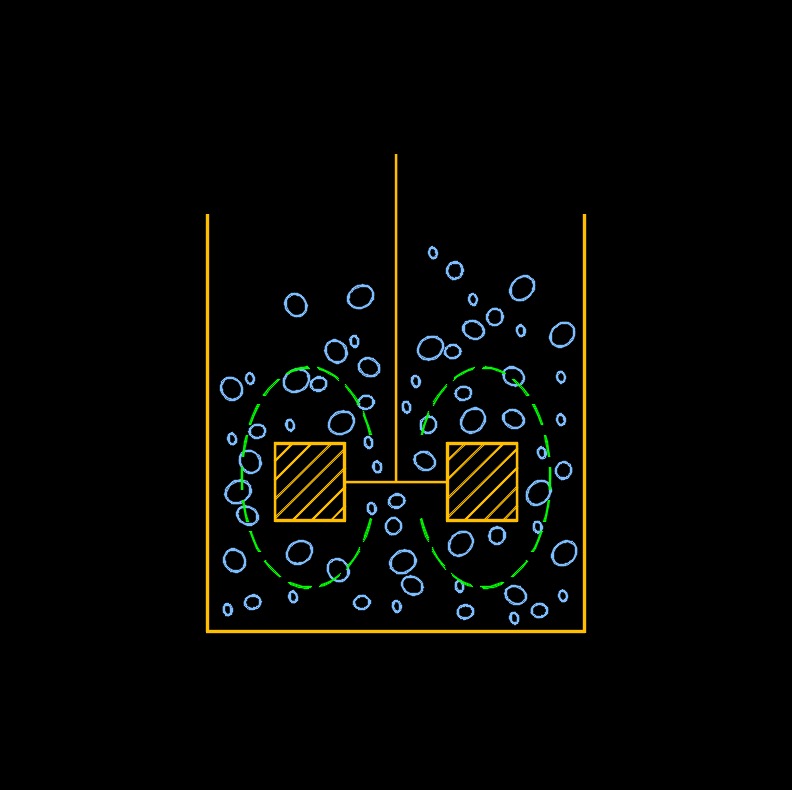Aeration Number
Aeration Number formula |
||
|
\( N_a \;=\; \dfrac{ Q }{ n \cdot d^3 }\) (Aeration Number) \( Q \;=\; N_a \cdot n \cdot d^3 \) \( n \;=\; \dfrac{ Q }{ N_a \cdot d^3 }\) \( d \;=\; \left( \dfrac{ Q }{ N_a \cdot n } \right)^{\dfrac{1}{3}} \) |
||
| Symbol | English | Metric |
| \( N_a \) = Aeration Number | \(dimensionless\) | \(dimensionless\) |
| \( Q \) = Volumetric Flow Rate | \(ft^3\;/\;sec\) | \(m^3\;/\;s\) |
| \( n \) = Rotational Speed | \(deg\;/\;sec\) | \(rad\;/\;s\) |
| \( d \) = Impeller Diameter | \(in\) | \(mm\) |

Aeration number, abbreviated as \(N_a\), a dimensionless number, is used for the agitated mixing of gas and liquids. The Aeration number is equal to the product of the air flow rate and the difference between the densities of air and liquid, divided by the product of the liquid flow rate and the density of the liquid.
The aeration number is commonly used in chemical engineering and environmental engineering to characterize the level of oxygen transfer in a liquid. It is an important parameter in the design and operation of various processes, such as biological wastewater treatment, fermentation, and aquaculture. A higher number indicates a higher level of aeration, which can improve the efficiency of these processes by increasing the oxygen transfer rate and promoting the growth of aerobic microorganisms.

